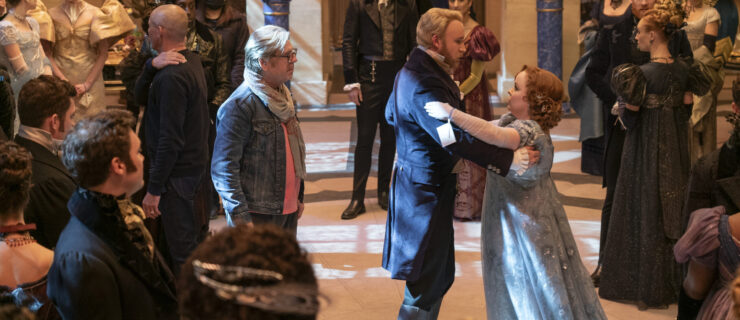Gaga Everywhere
In a mirror-less dance studio, your teacher asks you to move as if you’re in the shower and the hot water has suddenly disappeared. What do you do? You twitch, you vibrate. You can almost feel that freezing-cold water pelting your shoulders. As you shiver, you imagine how that movement affects each molecule in your body. Without mirrors, you’re able to let go and dance with abandon. You’re in a Gaga class.
Choreography by Gaga’s creator, Ohad Naharin, is popping up in the repertoire of top companies around the world. These days, dancers in Hubbard Street Dance Chicago, Cedar Lake Contemporary Ballet, Alvin Ailey American Dance Theater and Les Grands Ballets Canadiens de Montréal all speak Gaga. And that means it’s becoming a must-have tool for aspiring professional dancers.
A Brief History of Gaga
Naharin took the helm of the Batsheva Dance Company—located in Tel Aviv, Israel—in 1990. He began experimenting with a different kind of warm-up—a movement language he had developed to work through his own injuries. He named it Gaga, and it soon became the basis for training in the company, in lieu of ballet.
Gaga classes are now offered regularly across the U.S., particularly in major cities like NYC, Chicago and San Francisco, and in university settings like The Juilliard School, Stanford University and The Ohio State University. Classes are taught by Batsheva company members (current and former), as well as certified teachers.
Hubbard Street Dance Chicago dancers Jessica Tong and Jesse Bechard in Ohad Naharin’s Passomezzo (photo by Todd Rosenberg, courtesy HSDC)
Why You Need It
“Gaga isn’t a technique. It’s a movement language,” says Bobbi Smith, a former member of the Batsheva Dance Company who currently teaches Gaga at the San Francisco Conservatory of Dance and at Stanford. “You can use what you find through Gaga in ballet, Cunningham or Graham classes. Or out on the dance floor at a club, or when you run a mile. It gives you the keys to make your engine stronger.”
Other styles focus on perfecting form, but Gaga is different. “Ballet has a known aesthetic that you try to emulate. With Gaga, there is no sense of perfection, there is no absolute,” says Glenn Edgerton, artistic director of Hubbard Street. Gaga “is about electrifying the body as opposed to looking at your lines,” says Hubbard Street’s Jessica Tong, who has performed a number of Naharin’s works.
What to Expect
“Connect your effort to your pleasure.”
“Listen to how your skin touches the air around you.”
“Connect to your floating spine.”
“Be delicate with the availability to snap.”
“Connect to your groove.”
These are all phrases you may hear from your teacher in a Gaga class.
Teachers use detailed imagery to help dancers awaken specific body parts. “You bring focus to your legs, thighs and shoulders, but that moves into your fingertips, your palms, the back of your hands, the joints of your feet, your cheeks, your earlobes,” Tong says. “You get a tingly feeling when you’re that awake.”
Don’t expect any two Gaga classes to be the same, though. “Each class changes depending on the mood and energy within the room, from dancer to dancer,” Edgerton says.
Make It Work for You
“Dancers who are new to Gaga might feel self-conscious—you’re bouncing and shaking around a lot,” Tong says. But remember, finding freedom in the form is the whole point—and you’ll get out what you put in, just like any other dance class.
“As a teacher, I’m giving specific instructions, but it’s really up to you to explore and determine what the volume of your effort is going to be,” says Cedar Lake Contemporary Ballet dancer Navarra Novy-Williams, who teaches Gaga regularly in NYC at the Gibney Dance Center and Mark Morris Dance Center.
If you’re a dancer who is always in performance mode, even in the studio, Tong suggests sticking with Gaga and moving through the uncomfortable moments. “It can be so liberating to break the rules.”



